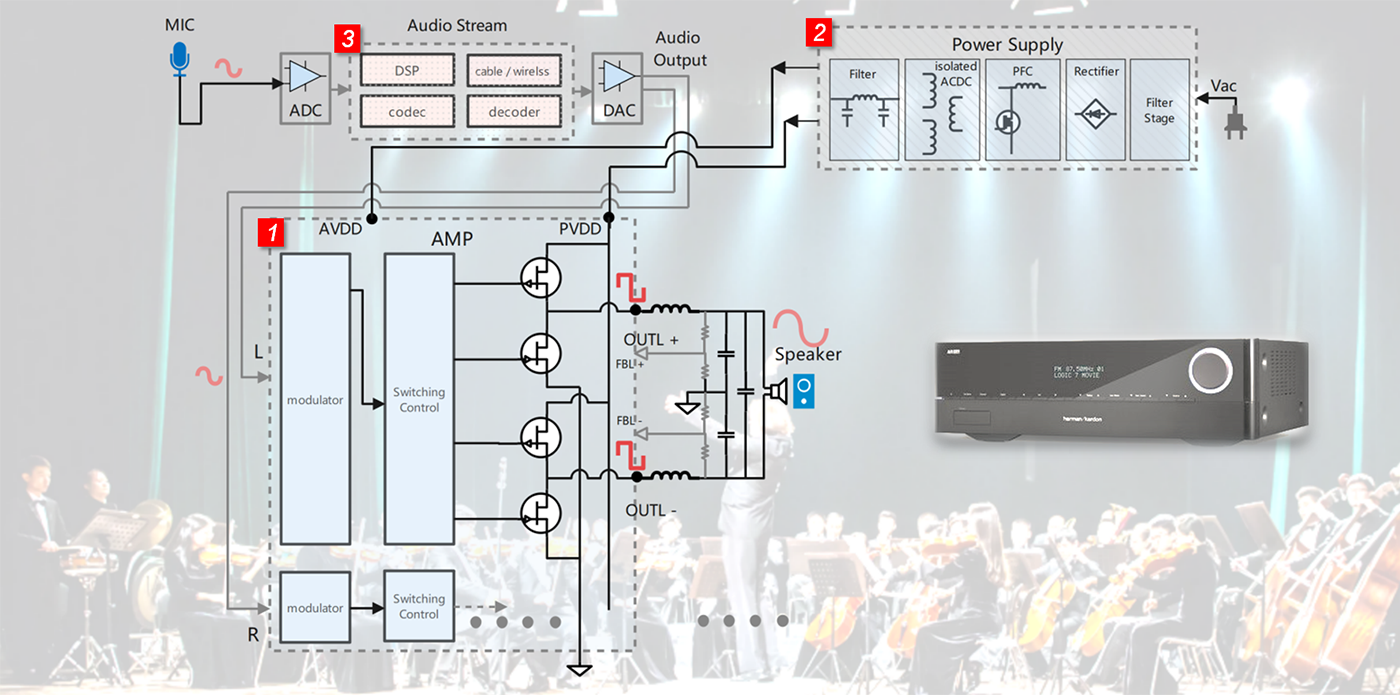
Class D amplifier has became the most popular audio amplifiers over a wide power range from several watts to hundreds of watts or even more. Comparing to linear amplifiers such as very lossy Class A or DC-biased Class B or a hybrid compromised type between Class A and Class B that as Class AB, Class D amplifier has significant advantages: first of all, it can achieve competitively high efficiency and very low harmonic distortion plus noise level which greatly helps generating less heat dissipation, second to that higher power density helps saving board space and cost, last but not least that Class D amplifier can be designed to overcome many possible switching noises and could be better adjusted for tunning flexibility - so that overall the sound quality could be kept still high compared to linear amplifiers, making it normally affordable tradeoff between sound quality and power efficiency and density.
BTL (Bridge Tied Load) is the most common output configuration for Class D amplifiers because of the speaker’s nature as an electrical-to-mechanical load - which means the current direction through the load has to be swinging from positive to negative (another direction). Because of this two synchronous buck drivers will be tied both ends of the speaker load in differential switching stage, each direction is with half-bridge regulation so that this full control is full-bridge converter. It is preferred this way not only because of better gates controlling that can avoid shoot-through problem but also because of the charge-pumping problem lies in a single half-bridge configuration, which causes significant noise level up that deteriorates output quality and cause EMI issues. It is also important for Class D amplifiers’ overall performance that the output LC filter has to be optimized to attain lowest power loss and being safe from interferences of sound quality. Coadaca offers several different state-of-the-art product series for digital AMP with extremely low Rdc and very compact size to benefit above mentioned design approaches for Class D amplifiers.